





Allergy
 General characteristic of a disease
General characteristic of a disease
The allergy represents hyper reaction of an organism to influence of certain external factors and irritants which are perceived by it as potentially dangerous.
The answer of immunity to any antigens which intruded in an organism is very difficult and includes development of antibodies which are peculiar defenders of an organism. However there are situations when immunity "runs away" and begins to perceive absolutely harmless antigen as dangerous. At such moments destructive hyper reaction which is shown in the form of an allergy is also started.
Immunity is allocated with remarkable memory therefore if there was the first contact of an organism with alien substance, and the mechanism of development of antibodies for neutralization of antigens was started, then this process (allergy) will repeat at each new meeting with this antigen (allergen).
You can learn about folk remedies for treatment of an allergy on the website shopnebolel.ru.
Allergy reasons
Potentially practically any substance, and also certain physical factors, such, for example, as the low air temperature or influence of sunshine can become the reason of development of an allergy.
The irritants provoking an allergy depending on an origin are divided into several groups:
- food;
- pollen;
- household;
- medicinal;
- epidermal (allergy to outside components of animals: wool, dandruff, claws, feathers etc.);
- fungal and bacterial;
- chemical;
- other allergens.
All above-mentioned substances become allergens only if in immune system failure is observed, otherwise – they do not cause an allergy.
There are several major factors of risk of developing of an allergy:
- Genetic predisposition. Estimates of researchers demonstrate that if hyper reaction is observed at one of parents, then the allergy at the child will be present with 30% probability. These data double if both parents have an allergy.
- Smoking. For the people predisposed to an allergy, tobacco smoke is the activator of start of hyper reactions, and not only smokers, but also the people inhaling this smoke suffer from it.
- Problems with upper respiratory tracts. Various respiratory infections and catarrhal diseases are the factors provoking an allergy that is explained by the fact that viruses, injuring a mucous membrane, facilitate penetration into an organism of allergens.
Allergy symptoms
This disease can proceed in several forms:
- allergy of respiratory tracts: symptoms of catarrhal diseases are characteristic: transparent allocations from a nose, repeated and frequent sneezing, however are shown they much longer;
- respiratory allergy: it is shown in the form of allergic rhinitis and bronchial asthma;
- conjunctivitis: allergy symptoms in this case are expressed by lachrymation and burning in eyes;
- enteropathy: in such look symptoms of an allergy to medicines and foodstuff are shown: vomiting, diarrhea, nausea, intestinal gripes, lock, paraglossa and lips;
- acute anaphylaxis: this form of an allergy is the most dangerous and can be shown in an interval of several seconds till several o'clock (usually to five) from the moment of hit of allergen in an organism. The allergy to medicines or stings of animals which is expressed as follows can be the cause of an acute anaphylaxis: a loss of consciousness, spasms, a sharp otdyshka, vomiting, rash on a body, an uncontrollable urination and defecation. At manifestation of similar symptoms of an allergy it is necessary to call the ambulance immediately.
Manifestation an allergy on skin
This type of an allergy demonstrates that on mucous or allergen got to blood and is shown in the form of reddenings and an itch. The allergy on skin is most brightly shown on those sites to which or densely the clothes adjoin, or there is a large number of skin folds.
The allergy on skin can be an effect of food allergy as reaction of an organism to various food stuffs from which are the most potentially dangerous honey, whole milk, nuts, a citrus.
Not only food allergy, but also other types of this disease can cause manifestations on skin, so, for example, pollen, hair of animals, dust, household chemicals, medicines and some types of fabrics can also become allergens.
The allergy on skin differs from usual rashes in the fact that without elimination of allergen of a rash do not give in to medical influence.
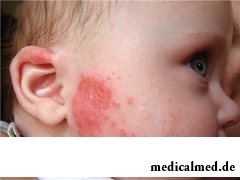 Allergy at the child
Allergy at the child
Symptoms of an allergy at the child are similar to allergy symptoms at adults:
1. reddenings;
2. rash on a body, buttocks, cheeks;
3. peeling and irritation of skin of cheeks (diathesis);
4. excessive sweating even in cases of an easy overheat;
5. constant intertrigo;
6. small tortoiseshell;
7. a peeling on a pilar part of eyebrows and the heads;
8. various manifestations of disturbance of digestion;
9. Quincke's edema (sudden hypostasis of mucous membranes, skin, hypodermic cellulose);
10. goose breathing.
It is possible to reveal allergens at the child in several ways:
- Attentive observation of parents of, when and under what conditions allergy symptoms at the child amplify; in particular, it is recommended to keep the food diary and to make in it entries, concerning reaction of an organism of the child to various food stuffs;
- Specific tests, in particular, blood test on immunoglobulin E;
- Scarifying tests which allow to reveal the substance causing an allergy in the child since five-year age: the minimum quantity of allergen is applied on skin of a forearm, and reaction of an organism to it is observed.
Display of an allergy at the child should be distinguished from pseudo-allergic reactions most of which often demonstrate disturbances in a condition of a digestive tract.
Treatment of an allergy
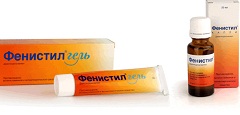
Full elimination and treatment of an allergy has to include the general improvement of an organism and strengthening of immunity, also effective treatment of an allergy means avoiding of contact with allergens.
The following belongs to drugs which the traditional medicine recommends for treatment of an allergy:
- antiinflammatory drugs;
- antihistamines;
- corticosteroids;
- anti-leukotrienes;
- steroid drugs of external use;
- stabilizers of mastocytes;
- bronchodilatory drugs;
- immunomodulators.
If to smile all twice a day – it is possible to lower blood pressure and to reduce risk of developing of heart attacks and strokes.

The mankind knows that some toxins at intake in the minimum quantities have therapeutic effect...
Section: Articles about health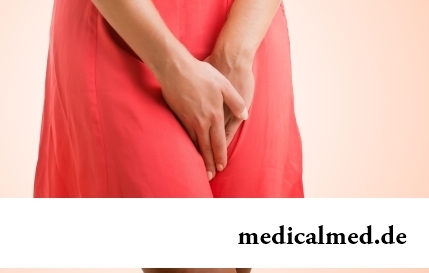
Statistically cystitis 25-30% of women up to 40 years have. With age this indicator raises, besides many do not get to statistics because do not see a doctor. The most sad that after the regular visits to doctors, long reception of antibiotics...
Section: Articles about health
It is possible to find the extensive range of fruit and vegetables in modern shops. Russians already got used that on counters there is not only a seasonal domestic production, but the vegetables and fruit which are grown up in the countries with more comfortable conditions of cultivation at all seasons of the year. However what we see in shops and in the vegetable markets, is only a small part of those edible plants with which the nature is so rich. Today we want to acquaint the reader with rare and very useful vegetables which on...
Section: Articles about health
The trophic ulcer is not an independent disease. This heavy complication arising owing to a thermal injury (a burn...
Section: Articles about health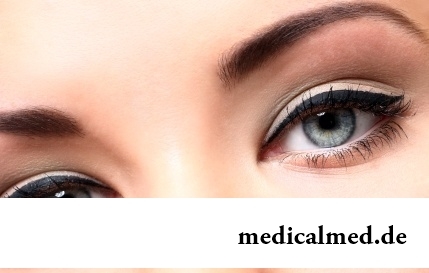
Eyes – unique body on the structure thanks to which the person obtains about 80% of information on the world around: about a form, color, size, the movement, and also many other parameters of objects or phenomena. But whether much we know about the most valuable body...
Section: Articles about health
For many spouses the question of planning of a family is one of the main. The problem of the choice of effective and safe contraceptives at the same time comes out on top. Russians still not often resort to operation of a vasectomy extremely popular in the USA, and also in some European and Asian countries. The reason is simple: most of men simply do not possess the complete information about specifics and effects of this procedure. Let's try to meet this lack and to acquaint readers about those...
Section: Articles about health
Phobia – the persuasive fear of a certain contents shown in a specific situation against the will of the person. Concepts of a phobia and fear...
Section: Articles about health
Radiological methods of a research are applied in medicine more than hundred years, and thanks to them millions of lives were saved. In many cases without X-ray it is impossible to make exact idea of a condition of bodies and fabrics, it is correct to make the diagnosis. Those...
Section: Articles about health
During foot walks blood moves on vessels more actively and one and all bodies are supplied with a large amount of oxygen. It affects the state of health of the person very positively....
Section: Slideshow
The nature does not stand stagnation and monotony. It is known that tissues of a human body atrophy if do not receive necessary loadings...
Section: Articles about health
We present to yours the TOP of the medicamentous means exerting the stimulating impact on a potentiality, i.e. on ability of the man to commission of sexual intercourse. At once it is necessary to tell that not always disturbances of erectile function can be eliminated with reception of t...
Section: Articles about health
Not without reason doctors say that 90% of diseases begin or develop because of misoperation of intestines. Disturbance of its functions is connected with various factors among which the important place belongs to excessive "clutter" of an intestinal path. In an organism not only the remains of food, but also mass of harmful substances which we with food accepted accumulate. Accepted to accept, and about that to remove them, did not take care. And in it a problem....
Section: Articles about health
All like to sing. Small children with pleasure are engaged in a vocal, not especially thinking of hit in a melody. Adults most often...
Section: Articles about health
No, probably, the person who would not have cold. Cold, cough, a headache – these symptoms are known to everyone. The peak of catarrhal diseases is the share of fall. SARS already came to schools and kindergartens, flu slowly makes the way to the cities, in a word, з...
Section: Articles about health
With age in a human body harmful substances collect. We receive them with food and water, at inhalation of the contaminated air, reception of medicines, use of household chemicals and cosmetics. A considerable part of toxins accumulates in a liver which main function is continuous purification of blood. This body begins to knock as any got littered filter, and efficiency of its work decreases....
Section: Articles about health
Cellulitis - very widespread cosmetic shortcoming which arises approximately at 80% of women sooner or later. Emergence ег...
Section: Articles about health
Life expectancy in various regions of Earth is not identical. Social stability, economic wellbeing, availability and level of medical care, household comfort, literacy of the population in the field of observance sanitary гигиен exert impact on it...
Section: Articles about health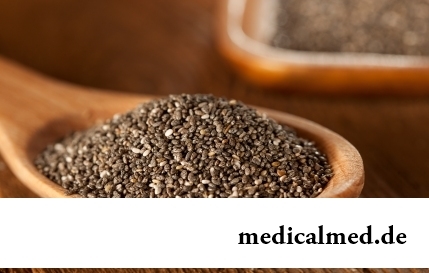
The chia plant, or the Spanish sage, is from South America. The indigenous people of the continent since ancient times used its seeds in food: small, but very nutritious kernels, in a form the reminding fasolina. Indians knew about useful properties of seeds of a chia, and applied them to maintenance of vitality and increase in endurance before serious exercise stresses....
Section: Articles about health
The immunity role in growth of the child is invaluable. The proteins-immunoglobulins produced by immune system preserve the child against diseases...
Section: Articles about health
Proofs of efficiency of Mildronate at treatment of coronary heart disease with stenocardia can be found in many publications of the end of the twentieth century. Researches were conducted since 1984, including placebo - controlled effects. In total клиничес...
Section: Articles about health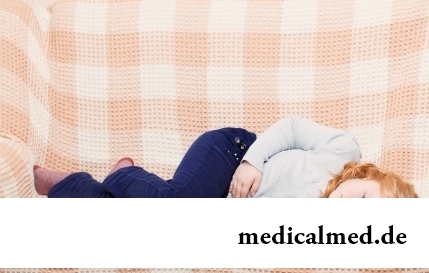
Epilepsy is one of widespread neurologic diseases. Parents, whose children suffer from this illness, should face rumors and delusions, many of which remained since the Middle Ages....
Section: Articles about health
Today about 30 diseases, sexually transmitted are known. To wide circulation of these illnesses extremely with...
Section: Articles about health
Residents of big cities quite often have a disease which is known as the syndrome of chronic fatigue (SCF) today. This illness affects the people belonging to various social and demographic groups and living on all continents. Most of all SHU to a podverzha...
Section: Articles about health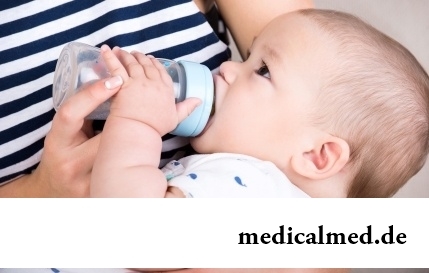
Producers of milk mixes for children assure: mixes are ideally balanced and adapted for needs of babies. If mother should raise artificially the kid owing to serious problems with health, to do nothing – it is necessary to feed with substitutes of milk. However pediatricians note that not seldom women without good reasons refuse feeding of the child a breast and pass to milk mixes. Common causes of such decision – the aspiration to leave quicker...
Section: Articles about health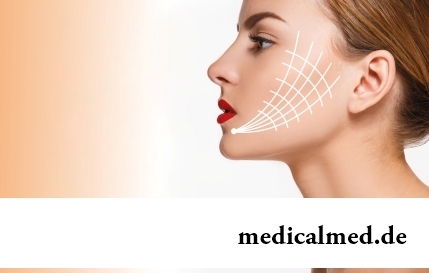
Aging — natural and inevitable process. Over time our skin loses elasticity, on it saggings, a face form теря are formed...
Section: Articles about health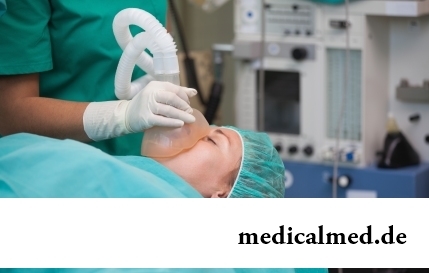
History of use of an anesthesia during operations contains more than 160 years. Annually in the world hundreds of thousands of surgical interventions during which to patients the substances immersing them in a dream and saving from pain are entered are carried out. Using an anesthesia to these...
Section: Articles about health
Tuberculosis – a serious infectious disease which development is caused by mycobacteria (Koch's bacilli). The illness is known from an extreme antiquity. Long time fight against it was considered as ineffective. Quite often the disease affected the whole families, and mortality from it was very high. It became the reason of emergence of a set of delusions concerning transmissibility and a possibility of treatment of tuberculosis....
Section: Articles about health
